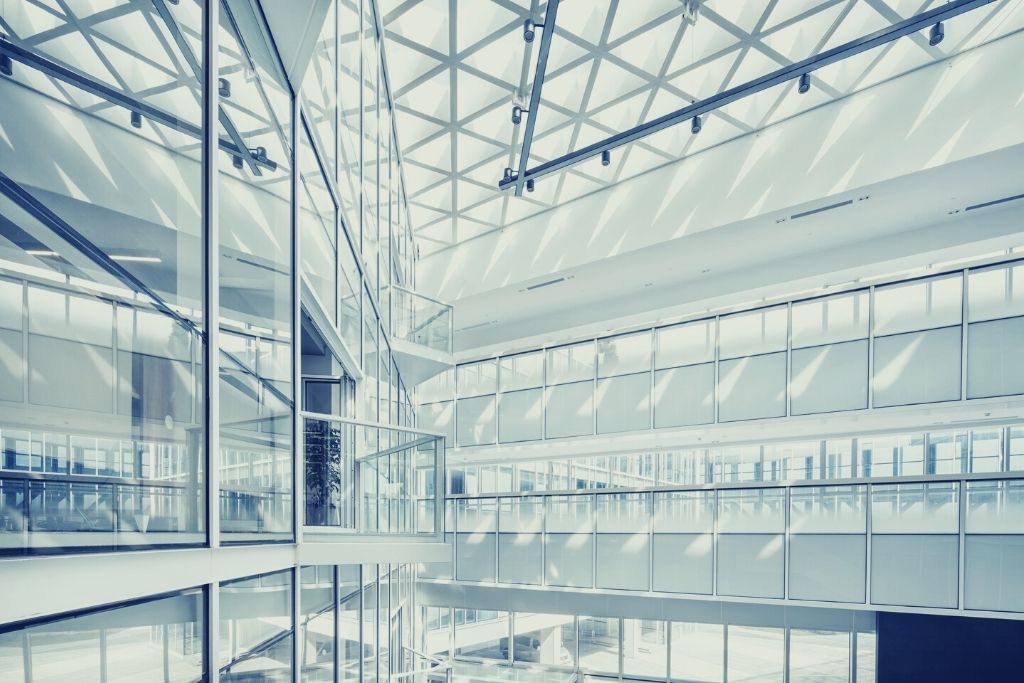Gone are the days of partitioned offices or work schedules set in stone. It’s time for open-space, Flex Office, and coworking. Our working methods are changing irrevocably. These changes ricochet into the commercial real estate market, which has reinvented itself for the past decades.
Commercial real estate was first impacted by digitalization, then by environmentally-friendly standards and labels, and finally, by tenants and users’ evolving needs. Today, it must adapt to the health crisis.
According to a 2020 survey by Jones Lang Lasalle, a commercial real estate consulting firm, 66 percent of surveyed companies planned to make telecommuting a norm. Likewise, 28 percent of them wanted to reduce their footprint. Here’s a look at the post-pandemic sector’s future, according to four construction experts, project managers, and project owners.
The Hunt for Space in the Commercial Real Estate Market
More telework means less workspace and eliminates some of the needs from chairs to desks, lamps, or the corner sofa. When health risks are on everyone’s mind and when every euro saved is welcome, the era of “miniaturization” in offices is a logical move.
Thus, for Denis Gallois, engineer at AR-C, if offices’ construction should continue despite Covid-19, this will reduce the surface areas.
The offices will be more versatile. Employees will reserve their office a little like they reserve a theater seat or a tennis court. They will also have less and less of their own space, but the different offices will belong, in a way, to all the employees.
Denis Gallois, engineer at AR-C, a French façade and structure design office
Laurent Gobert, Director of Development for GDG Investissements, echoes this observation: Teleworking impacts the use of office space. But Gobert points out that these working methods’ changes don’t necessarily lead to a reduction in the amount of space required. More square meters per employee are now needed. Thus, the common areas allocated to services are growing exponentially.
“Faced with changes in working methods, especially teleworking, customers are looking for less space dedicated to offices,” Gobert says. “But these square meters that one might think were lost for our buildings are being reallocated to service spaces, which are on the rise, such as sports and leisure rooms and business centers.”
Reinventing Life On The Construction Site

The reorganization of workspaces is far from the health crisis’s only influence on the commercial real estate market. It’s also changing the construction sites, where respecting the distances and protecting workers have a significant impact.
According to Annie Jory, Business Director at the AE75, a construction economics firm, the health crisis shook how construction sites are organized. “The living base must be enlarged; the workers must avoid crossing each other; a mask and freeze budget must be planned,” she says.
Beyond the organizational aspect, these sanitary constraints have generated high additional costs. More than half of companies (55 percent) had reduced profit margins due to them, according to a study by Wizzcad. However, there’s a silver lining.
“With the crisis, the digitalization of meetings has accelerated. We can now organize video conferences that are efficient and avoid wasting time traveling to the architect’s or contractor’s office,” says Jory.
Especially considering how the construction sector has been seriously lagging behind in digitalization, Jory makes an excellent point.
The Era of Innovative Solutions
For Adriana Cavagna, Architect at Hardel Le Bihan, Co-19 will profoundly accelerate the use of innovative solutions for office design.
In terms of BMS (Building Management System), an employee will soon be able to control the elevator from a smartphone without pressing a button. They will be able to move freely without touching any handle, thanks to door automation. Thus, the elevator cabins will be more expansive; the surface materials will be antibacterial, the toilet flushing will be automatic.
These innovations will enable post-pandemic offices to be stamped with one of the “health safety” labels. These include Dekra certification, Socotec, Afnor, and more, created in response to the health crisis. These labels will communicate the approaches of companies that respect health regulations to their employees and customers.
Commercial Real Estate Is Proving Its Agility Once Again

Finally, Michael Nakache, architectural specifier at dormakaba France, says, “In these times dictated by modified working methods and by a health crisis far from being solved, the real estate of the commercial sector must once again show agility.”
And Aude Thiebe, Marketing and Loyalty Manager, concludes: “For obvious reasons of exchange, creation, efficiency, information sharing, the office remains and will remain — Covid or not — the privileged space of the social link in companies.”






